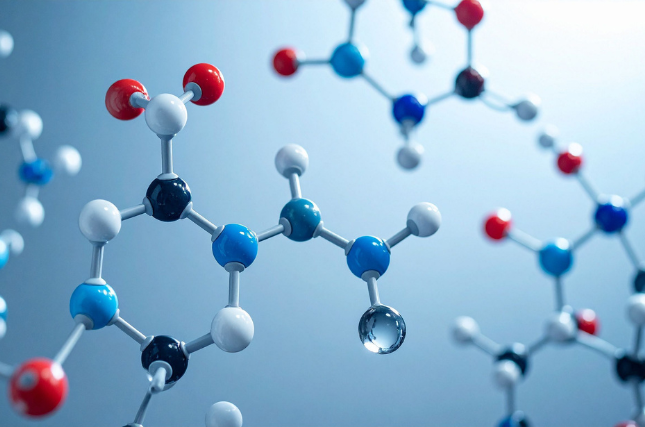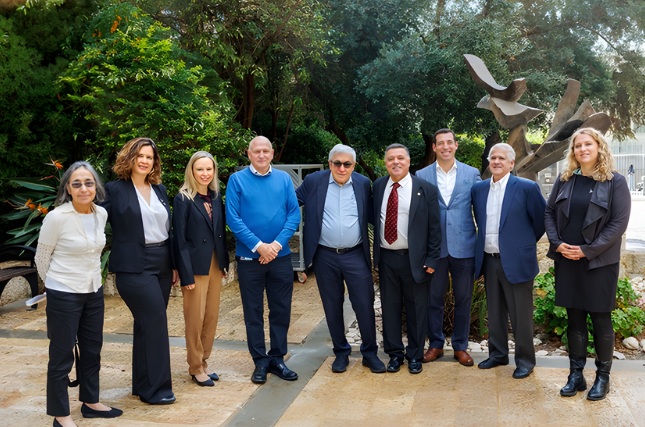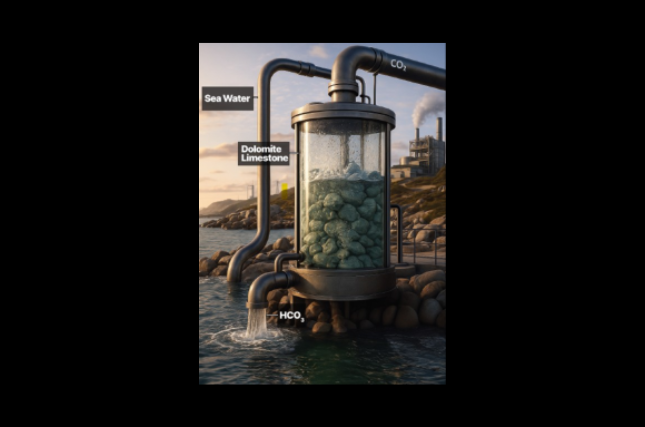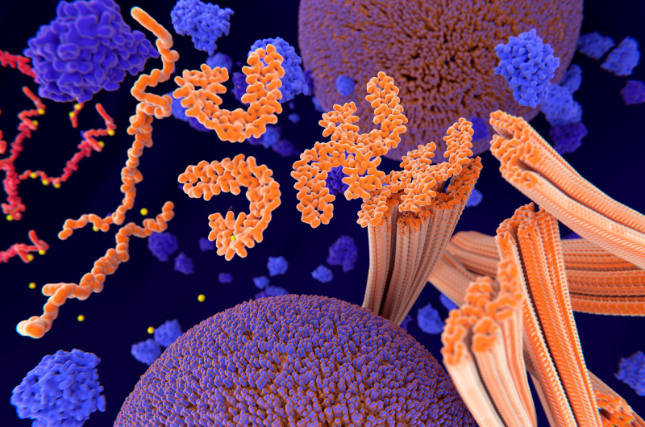
October 27, 2025 – An international team of scientists unveiled the most comprehensive model yet of how cells regulate traffic through their nuclear pore complexes (NPCs), the gateway between a cell’s nucleus and its cytoplasm—solving one of biology’s oldest mysteries. The breakthrough, published in the Proceedings of the National Academy of Sciences (PNAS), sheds light on a process that goes awry in various diseases, including cancer, viral infections, and neurodegenerative diseases such as Alzheimer’s and ALS.
The research, led by scientists from the Rachel and Selim Benin School of Computer Science and Engineering at the Hebrew University of Jerusalem (HU), the Quantitative Biosciences Institute (QBI) at the University of California, San Francisco (UCSF) School of Pharmacy, The Rockefeller University, and the Albert Einstein College of Medicine, focuses on NPCs, small but sophisticated gatekeepers that manage all traffic between a cell’s nucleus and its cytoplasm.
“Think of NPCs as tiny yet highly sophisticated security checkpoints,” explained HU’s Dr. Barak Raveh, the study’s lead author. “Even though each one is only about one five-hundredth the width of a human hair, it lets millions of molecules meant for transport pass per minute while screening out the rest, and does so with remarkable precision.”
The Long-Standing Mystery of Molecular Selectivity
For decades, scientists have struggled to understand how these molecular gates could be both fast and selective. Because NPCs are so small, direct observation of their inner workings has been nearly impossible. The new model brings together years of fragmented experimental data and theoretical insights, combining them into a single computational framework that captures what happens at the molecular level, on timescales as short as a few thousandths of a second. Earlier models envisioned the NPCs as a mechanical gate, or more recently as a cohesive hydrogel forming a sieve with fixed pore sizes, but these views are inconsistent with the NPCs’ composition and architecture, the observed speed, adaptability, and reversibility of nucleocytoplasmic transport, and the rapid passage of even large molecular assemblies through the pore.
Instead, this new work identifies ten molecular design features that work together to ensure the NPCs’ extraordinary efficiency and resilience. Central to these is the concept of an entropic barrier, where entropy is a classic measure of molecular disorder. In the integrative model, the pore interior forms a dense, dynamic “forest” of flexible protein chains called FG repeats. Rather than a single channel, fleeting openings in the highly dynamic thicket of FG repeats continually appear and disappear, permitting small molecules to diffuse while statistically discouraging larger ones. However, large molecular cargoes can be granted passage through the pore if they are accompanied by nuclear transport receptors, specialized molecular “passports” that overcome the entropic barrier by making many fast, transient “handshakes” with the FG chains. The receptors can slide along the rope-like FG polymers, shifting seamlessly between chains to sustain flow, while redundancy among FG repeats ensures robust operation even under mutation, deletion, or mechanical strain.
“Because these FG repeat chains are always in motion and take up space, they create a crowded, restless environment,” said Professor Michael Rout of The Rockefeller University. “The transport mechanism can be imagined as a vast, ever-shifting dance across a bridge. The FG repeats form a dynamic, moving crowd that allows only those carrying the right dance partners, the nuclear transport receptors, to pass. The receptors lead their cargoes fluidly through this dense, fluctuating field, in fleeting molecular embraces before moving on. Without these partners, flat-footed spectators who cannot dance are turned back.”
From Molecules to Medicine
The study resolves a long-standing paradox: how NPCs can allow passage of enormous molecular complexes while blocking smaller ones. According to Professor Andrej Sali of QBI at the UCSF School of Pharmacy, “Our model provides the first quantitative, reductionist, and mechanistic explanation for how the NPC achieves this remarkable selectivity. This understanding opens new possibilities for therapeutic interventions and biotechnology applications.”
Professor David Cowburn of the Albert Einstein College of Medicine adds that the findings have “immediate implications for understanding diseases where nuclear transport malfunctions, including ALS, Alzheimer’s disease, and cancers.” The model could also serve as a blueprint for designing artificial nanopores, synthetic versions of NPCs that could revolutionize biotechnology, from targeted drug delivery to biosensing.
A Milestone in Integrative Structural Biology
Validated against multiple independent datasets, the computational model accurately predicted previously unobserved transport behaviors. It also revealed how “fuzzy,” transient interactions between transport receptors and FG repeats dramatically boost efficiency, allowing the system to transport even massive cargoes such as ribosomal subunits or viral particles.
Crucially, the model shows that the system’s redundancy and exponential sensitivity make it both robust and finely tunable, a feature that likely explains its evolutionary resilience.
This achievement marks a milestone in integrative structural biology, showcasing the power of computational modeling to unify diverse experimental findings into a single coherent understanding of life’s molecular machinery.
The research paper titled “Integrative mapping reveals molecular features underlying the mechanism of nucleocytoplasmic transport” is now available in Proceedings of the National Academy of Sciences (PNAS) and can be accessed here.
Researchers:
Barak Raveha,b,c,d, Roi Eliasiana, Shaked Rashkovitsa, Daniel Russelb,c,d, Ryo Hayamae, Samuel E. Sparksf, Digvijay Singhg, Roderick Limh, Elizabeth Villag,i , Michael P. Route, David Cowburnf, Andrej Salib,c,d
Institutions:
a. School of Computer Science and Engineering, Hebrew University of Jerusalem
b. Quantitative Biosciences Institute, School of Pharmacy, University of California, San Francisco
c. Department of Bioengineering and Therapeutic Sciences, University of California, San Francisco
d. Department of Pharmaceutical Chemistry, School of Pharmacy, University of California, San Francisco
e. Laboratory of Cellular and Structural Biology, The Rockefeller University, New York
f. Departments of Biochemistry and Systems and Computational Biology, Albert Einstein College of Medicine, Bronx, NY
g. School of Biological Sciences, University of California
h. Biozentrum and the Swiss Nanoscience Institute, University of Basel, Basel 4056, Switzerland
i. HHMI, University of California





